Hong Kong's streets used to be lined with shophouses, but few remain today. In this guest post, Dr. Lee Ho Yin and Prof. Lynne DiStefano from Hong Kong University walk us through the history of the Hong Kong shophouse, then show us how to identify the different generations.
Tong Lau: A Hong Kong Shophouse Typology
|
|
| (Image source: Urban Renewal Authority) |
by
Lee Ho Yin and Lynne DiStefano
Division of Architectural Conservation Programmes (ACP)
Faculty of Architecture, The University of Hong Kong
1.0 Definition of Tong Lau and Tenement House
Tong Lau (functioning as singular and plural; 唐樓, literally, “Chinese building”) belongs to the generic urban shophouse typology found in predominantly Chinese cities in Southern China and Southeast Asia, such as Hong Kong, Guangzhou, Macau, Singapore and Penang. It is a typology that has infused with material, construction and living traditions of Southern Chinese in 19th-century urban centres, particularly towns and cities in Guangdong and Fujian provinces. The prototype of this typology is the 19th century urban shophouse of Southern China (Fig. 1). This paper focuses on Tong Lau of Hong Kong built before the Pacific War (1941-45).
Fig. 1 A drawing by the 19th-century Shanghai-based illustrator Wu Youru(吴友如), depicting a Southern Chinese urban street scene lined with shophouses. (Source: 十九世紀中國風情畫二百圖)
Tong Lau has become a term that applies to the urban shophouse typology that has acquired special characteristics peculiar to Hong Kong as a result of such local factors as land policy, town planning and building regulations, all of which combined to transform the design from the prototypal architecture in order to adapt it to local conditions and circumstances.
Tong Lau in Hong Kong has been referred to as “tenement house.” Strictly speaking, this term does not describe the architecture, but the function of such buildings for tenement housing in response to the critical shortage of living quarters to accommodate the rising population. Such a situation became more severe from the 1930s to the 1960s, when mass influx of refugees escaping from war and political turmoil in Mainland China. The introduction of a public housing policy and the construction of large-scale public housing estates that began in the 1950s eventually alleviated the tenement housing problem in Tong Lau to a large degree.
According to Hong Kong’s Building Regulations, a building that is used for tenement housing is a “Tenement House,” which is defined in Clause 6, sub-clause 56 of the Public Health and Buildings Ordinance, 1903 as “any domestic building constructed, used, or adopted to be used for human habitation by more than one tenant.”
In summary, the type of Chinese shophouse found in Hong Kong should properly be called Hong Kong Tong Lau (香港唐樓 or 港式唐樓) or simply Tong Lau, as this provides cultural and geographical distinction from its counterparts in other places, such as, Guangzhou Qilou (廣州騎樓), Penang Shophouse (檳城店屋) and Singapore Shophouse (新加坡店屋).
2.0 Historical Context of Chinese Settlements in Hong Kong
In the 19th century, as foreign powers aggressively pried open China for trade and other economic gains, they provided an unexpected escape route to thousands of Chinese who were desperately seeking a way out of their socio-economic predicament in China. The people in the coastal areas of eastern southern Fujian and eastern Guangdong were exposed to opportunities for business and employment overseas through local trading ports that had been opened to foreign trade. For example, in the province of Fujian, the coastal city of Amoy (now Xiamen) established maritime trading with British Singapore in 1821, while its provincial capital Fuzhou (formerly called Foochow) opened to foreign trade in 1842. The capital of Guangdong province, Canton (now Guangzhou), became China’s first official foreign trading port in 1759, while Hong Kong became a British possession and entrepôt in 1842 at the end of the First Opium War.
Consequently, large numbers of coastal Chinese from Guangdong and Fujian began a mass exodus to foreign lands in search of a better livelihood with considerable numbers being drawn particularly to the politically stable and economically vibrant British colonies of Hong Kong and Singapore in the Far East. The British colonial administrations of Hong Kong and Singapore welcomed the Chinese immigrants because the newly established colonial territories needed the cheap labour and services, cottage industries, and the trade and investment that the Chinese brought with them.
After Hong Kong Island was ceded to the British in 1841, the focus was on developing Hong Kong as a trading port and a foothold to the lucrative China trade. The first city plan for the city of Hong Kong, known as City of Victoria, was Gordon’s Map of 1843 (Figs. 2 and 3), is basically a survey map of the locations of the early batch of land lots sold for residential and commercial uses.
Fig. 2 Gordon’s Map of 1843, showing the early ad-hoc layout of the City of Victoria. The large rectangular compound marked “Magistracy and Jail,” is the site of today’s Central Police Station Compound. The area outlined in red dotted lines is shown in Fig. 3 below. (Source: Public Records Office, Hong Kong)
Fig. 3 Details of Gordon’s Map of 1843, showing the three Chinese quarters, Lower Bazaar (today’s Bonham Strand area), UpperBazaar (today’s Gage Street area) and Tai Ping Shan, which appears in its initial developing form (indicated by the two short parallel blocks in dotted lines on the lower left of Lower Bazaar). (Source: Public Records Office, Hong Kong)
In June 1843, two years and five months after the British hoisted the Union Jack on Possession Street to proclaim the takeover of Hong Kong Island, there were three areas in the newly fledged City of Victoria where emigrant Chinese settled (Evans 1970: 69-71) (Fig. 3). They were:
- the downstream banks that correspond to the area across the road from today’s Central Market, along today’s Cochrane Street, Gutzlaff Street, Graham Street and Peel Street;
- the coastal land that corresponds to the area along today’s Jervois Street, Bonham Strand and Bonham Strand West;
- the area that would become the Crown Colony of Hong Kong’s first “Chinese Town”: Tai Ping Shan.
The early forms of these three Chinese quarters are shown on Gordon’s Map of 1843 (above), the earliest map depicting the City of Victoria in the new Crown Colony. During this time, Tai Ping Shan was at the beginning of its development, as evident in the two short rows of yet-to-be-built development, marked in dotted lines. By 1856, Tai Ping Shan had fully grown to its territorial extent, as shown on an 1856 Map of City of Victoria (Fig. 4).
Fig. 4 Part of the 1856 Map of City of Victoria. Compared with the Gordon’s Map of 1843 (Fig. 2), the three areas resided predominantly by Chinese were now fully developed and distinguished by a denser urban pattern than its more spacious surrounding lots that were designated for European houses and public buildings. (Source: Public Records Office, Hong Kong)
As shown in the map Scheme for the Improvement of Tai Ping Shan (Fig. 5), dated 15 September 1866 (below), the fully developed Tai Ping Shan was an area roughly 300 m by 250 m and bounded by Caine Road in the south, Queen’s Road (today’s Queen’s Road Central) in the north, Sing Wong Lane (today’s Shing Wong Street) in the east and St. Stephen Street (today’s Po Yan Street) in the west. By the eve of the bubonic plague outbreak in 1894, Tai Ping Shan was the main urban Chinese settlement in the City of Victoria, supporting a sizable percentage of the estimated 210,000 Chinese in Hong Kong (Pryor 1975: 65).
Fig. 5 The 1866 map (the date is shown under the signature of the Surveyor General) entitled “Scheme for the Improvement of Tai PingShan, showing the extent of district, as indicated by the smaller lots typically developed for Chinese shophouses. (Source: Public Records Office, Hong Kong.)
3.0 Early Tong Lau in Hong Kong (Pre-statutory Control)
The earliest form of Hong Kong Tong Lau was found on the island’s major Chinese settlements, one of which was Tai Ping Shan. Prior to the bubonic outbreak in 1894, the design of these buildings was broadly similar in appearance and construction with those found in towns and cities of Southern China during this period. In Mr. Chadwick’s Report on the Sanitation Condition of Hong Kong (in Faure 1997: 33-46),[1] there is a section on “Chinese Houses,” which describes in detail with illustrations the Tong Lau in Tai Ping Shan in the 1880s (the report is dated to 1882). A summary of the section is as follows:
3.1 Differences between Early Tong Lau in Hong Kong and their Counterparts in Southern China
Although the architecture of early Tong Lau in Hong Kong was broadly similar to those in Southern China, Chadwick observed that there were noticeable differences due to “European influence and example, but principally to the necessity for economy of space on account of the high price of land and the great cost of preparing level sites for building” (Chadwick’s Report, in Faure 1997: 34). This means that the local conditions did have an effect in transforming even the early Tong Lau, which featured decorative elements inspired by Western Classical architecture and, more significantly, were more compact than their Mainland counterparts (Fig. 6).
Fig. 6 Tai Ping Shan in the 1870s, showing the earliest form of Hong Kong Tong Lau, which were broadly similar in appearance and construction with those found in towns and cities of Southern China during this period, but were different in decorative details and size. (Source: Hong Kong Museum of History)
3.2 Materials and Construction of Early Hong Kong Tong Lau [2]
| Foundation | Because of the sloping terrain of Tai Ping Shan (and most areas in the City of Victoria), the Tong Lau stood on “artificially prepared sites, part in bank, part in cutting.” Chadwick observed that “basements or cellars under houses are unknown.” |
| Floor | On the ground floor, unglazed red tiles (Canton tiles) were used, but the floor was frequently left un-tiled, with exposed rammed earth. Cookhouses and alleys were paved with granite blocks. Upper floors consisted of floor planks of Chinese fir supported on round rafters that were flattened above to receive the planks (and below to receive the ceiling, if there was one). |
| Walls | Walls were constructed of blue Canton brick (traditional Chinese grey brick) usually of inferior quality (“soft and very porous”). Red bricks were more expensive and therefore rarely used. Granite from local quarries was largely used for door jambs and lintels over shop fronts. The walls were usually plastered but sometimes left fair-faced, with the brick surface rubbed smooth and neatly pointed in the traditional Chinese manner. |
| Roof | The roof was tiled with unglazed semicircular clay tiles laid with overlapping ends; the eaves tiles were ornamental and glazed. |
3.3 Architectural Characters of Early Hong Kong Tong Lau (Figs. 7 and 8)
| Building Frontage | Each unit, of two to three storey high and between 13 to 16 feet wide (about 4 to 5 m), was separated from adjacent units by brick party walls. A large unit for the wealthy was formed by uniting several narrow units by doors or archways in the party walls. |
| Building Depth | The building measured about 30 to 60 feet from front to back (about 9 to 18 m), and two rows of buildings were built back to back with a common back wall and no space between them (this would change with the post-plague Public Health and Buildings Ordinance 1903, which reduced the building depth and introduced a scavenging lane, or service back lane, for waste disposal). |
| Service Areas | A space of about 7 feet deep (about 2 m) at the back of the building was separated by a wall from the rest of the building. This is the “cookhouse,” which also served as the kitchen, toilet and the backyard. Venting of cooking fire was by means of a 4 to 5 feet square (1.2 to 1.5 m square) “smoke hole” through the upper floor(s) and the roof, or simply through windows. Chimneys were the exception. Compliance to the Ordinance 8 of 1856 that required every house to be “provided with a latrine or privy and ashpit” was rarely observed. The construction of waste water drainage was unregulated and often inadequate, if available. |
| Served Areas | The ground floor of a Tong Lau was used as shop space, but a cockloft was often built on the upper space in front of the partition wall of the cookhouse, and used as working or sleeping quarters. The upper floor was partitioned into cabins of about 10 by 10 feet wide (about 3 m2) above which was a cockloft level that was similarly divided. Each cabin housed an individual or a family, and Chadwick inspected one tenement unit and found five families of 16 people living on one floor. Chadwick reported the case of a row of eight small houses that provided tenement lodging for 428 inhabitants, who were common labourers, each of whom had 230 cubic feet of space (about 20 m3) (Faure 1997: 46). It was reported in 1874 edition of the Hong Kong Annual Report that pigs and poultry were kept inside buildings. |
Fig. 7 Drawings depicting the section and plan of an early Tong Lau found at Tai Ping Shan in the early 1880s. In the drawings, 1 = cookhouses; 2 = shop; 3 = smoke hole through the roof and floor; 4 = cockloft or platform above tenement cabins; 5 = tenement cabins; 6 = street in front of building. (Source: Chadwick’s Report (1882) in Faure 1997: 34 and 35)
Fig. 8 Block plan of several rows of early Tong Lau at Tai Ping Shan, early 1880s. (Source: Chadwick’s Report (1882) in Faure 1997: 44)
4.0 Statutory Control of Tong Lau in Post-plague Hong Kong
4.1 The First Statutory Control of Tong Lau: Public Health and Buildings Ordinance 1903
In conjunction with the first town plan for Singapore, the Jackson Plan, or Plan of the Town of Singapore of 1822, the authorities in Singapore issued a set of building regulations that control the design and construction of Chinese shophouses in Singapore in terms of appearance, public space provision, and construction and materials standards. In contrast, the authorities of early Hong Kong imposed little statutory control on the architecture of Chinese shophouses other than that under Buildings and Nuisance Ordinance of 1856, which regulated the use of the building by prohibiting trades that would cause nuisance because of smell or noise. Such trades were cited as “brasier, slaughterman, soap maker, sugar baker, fellmonger, melter of tallow, oilman, butcher, distiller, victualler or tavern-keeper, blacksmith, nightman, scavenger, or any other noisy or offensive trade.”
It was not until the beginning of the 20th century when Hong Kong had its first comprehensive set of enforceable building regulations under the Public Health and Buildings Ordinance 1903, which regulated living space standards and construction quality of Chinese shophouses. These regulations were remedial measures after the outbreak of bubonic plague in the over-crowded Chinese quarters of Tai Ping Shan in 1894.
The recommendations made in Mr. Chadwick’s Report on the Sanitation Condition of Hong Kong (1882) were resisted by both the European and the Chinese communities. In essence, the argument against it was out of financial considerations, as it was felt that the higher standards for living spaces and better provision of latrine would cost more and thereby reduce available accommodation. However, mindset changed with the epidemic outbreak of bubonic plague at Tai Ping Shan in 1894, which took a heavy toll in fatalities. As Chadwick summarized the situation in his Preliminary Report on the Sanitary Condition of Hong Kong (dated 10 April 1902) presented to the Legislative Council (second paragraph of section 98, page 34):
. . . Now land is costly in Hongkong, either it has to be excavated in the hill-side, or reclaimed from the sea. Naturally, the land-owner desires to get the best rental during the past twenty years, numerous Building Ordinances, drawn up by the Professional Advisors of the Government, have been brought before the Legislative Council, but in each case, many salutary provisions have been withdrawn or emasculated at the request of the Unofficial Members of Council, representing the landed interest. The Government has hesitated to use its official majority. Since the outbreak of the plague, the mercantile section of the community have [sic] realized that their interests are not quite independent of the health of the Chinese population. . . .
To urgently remedy the situation in the aftermath of the plague outbreak, public Ordinance was proposed in 1887 which stated that open space had to be provided at the rear of building, latrines must be included and there had to be a minimum of 8.5 m2 internal living space. In 1888, a legal notice was drawn up and more notices were drawn up from 1887 to 1903.
An important recommendation that contributed to the Public Health and Buildings Ordinance of 1903 was made by Dr. W. J. Simpson, professor of hygiene at King's College, London, and lecturer in tropical hygiene at the London School of Tropical Medicine, for general improvement of sanitary conditions and stricter control over the design of Chinese tenement blocks which he described as follows:
The rooms, as a rule, are far too deep, the object of this depth being to subdivide each room into a number of cubicles for the accommodation of families or lodgers. Though there may be windows at each end of the room, the great depth materially obstructs the light to take an example from the better class of buildings, many of the houses that are being erected are eighty feet deep without lateral windows and contain long, narrow rooms of fifty-five feet in depth, by twelve or thirteen feet in width, lighted in front by a window and also in the rear by another window which looks into a backyard of twelve feet.[3]
From the recommendations made by Chadwick and Simpson arose the Public Health and Buildings Ordinance of 1903 which set new standards for the design and occupancy of Tong Lau and remained in force until 1935. Some of the regulations derived from the ordinance that emphasized on maintaining natural lighting and ventilation for the building and the surrounding environment were:
- Provision of open space and a scavenging lane of at least 6 feet wide (about 1.8 m) behind buildings (Clause 179). This means that rows of Tong Lau facing parallel streets could no longer be built back to back, and the back lane helped improve sanitary conditions by having the space to allow in lighting and ventilation, as well as for waste disposal.
- Building height limited to the width of the fronting street, and not more than four storeys, or higher than 76 ft (about 23 m) (Clause 188 (4) and (5)). This controlled the building volume to ensure that public areas, in particular the surrounding streets, would receive adequate natural lighting and ventilation.
- Building depth limited to 40ft (about 12 m) (Clause 151 (1)). This was an attempt to curb the number of under lit and badly ventilated tenement cabins (or cubicles, in the words of Dr. W. J. Simpson in his quote above) in a long narrow building.
4.2 Statutory Control of Tong Lau prior to World War II: Buildings Ordinance 1935
The Buildings Ordinance 1935 and its accompanying regulations represent the final set of statutory control imposed upon the architecture of Tong Lau prior to the outbreak of the Pacific War (1941-45). The next update of the building regulations would be in 1955, and this is outside the scope of this study, which focuses on the development of Tong Lau up to World War II.
The building regulations under Building Ordinance 1935 are essentially a continuation of those introduced in 1903, but with more stringent control:
- Building height limited to 3 storeys, unless constructed of fire-resistant materials, and limited to 5 storeys for domestic (Clause 87 (7)).
- Building depth limited to 35ft (about 11 m) (Clasue 74 (1)). The shorter building depth than that allowed in the 1903 regulations would further limit the partitioning of dark and badly ventilated tenement cabins or cubicles.
- Adequate light and ventilation to be provided at every storey on every staircase (Clause 43 (3)). This regulation would give the late pre-war Tong Lau its character-defining feature—a naturally lit and ventilated common staircase.
5.0 Different Generations of Tong Lau
5.1 Methodology
There has not been an attempt to categorize Hong Kong’s shophouses; the difficulty lies in determining a suitable basis for distinguishing the different variations. The traditional means of differentiating by aesthetics alone is problematic for Hong Kong’s shophouses. This is because many shophouses are of undeterminable or ambiguous architectural style, and shophouses of discernable but different architectural styles may be constructed during the same period. In this report, the authors shall attempt a different approach in chronologically organizing the varieties of shophouses and differentiating them by means of the materials and construction techniques.
The development lifespan of Hong Kong’s shophouses lasted a relatively short time, about 120 years from the 1840s to the 1950s, before it was completely superseded by taller, bigger and more modern buildings. As there is no in-depth baseline study, the categorization of Hong Kong’s shophouses explained in this section is based on the authors’ on-going comparative analysis of individual shophouses. It is in the authors’ opinion that Hong Kong’s shophouse typology can be categorized into four generations, the details of which are elaborated below.
5.2 First Generation: the 19th-century Brick-and-timber Shophouse
Hong Kong’s first generation shophouses were typically built in the 19th century, starting in the 1840s, when builders from southern China were drawn by economic opportunities to the newly founded British colony of Hong Kong. As there was no building control imposed on the design of shophouse, the builders replicated the southern-Chinese shophouse form they were familiar with. These shophouses were constructed of walls of Chinese grey brick, floors of timber beams and boards, and a roof of timber beams and clay tiles.
Shophouses of this period reflect the economy of construction and display the minimum amount of decorative details. This is probably a direct reflection of the general state of the economy of the Chinese settlements in Hong Kong at the time. Few extant examples exist in Hong Kong’s urban areas, and the only known example to date is the shophouse at No. 120 Wellington Street, completed in 1884, which once housed the famous Wing Woo Grocery.[4] (Fig. 9)
Fig. 9a Southern Chinese shophouses at Taipingshan District in the 1870s. (Source: Hong Kong Museum of History)
Fig. 9b The 1884 shophouse at No. 120 Wellington Street. (Source: Lee Ho Yin)
5.3 Second Generation: the early 20th-century Transitional Shophouse
Hong Kong’s shophouses entered into the second generation with the southern Chinese shophouse design being modified by the newly introduced statutory regulations as well as new building materials and construction techniques. In terms of regulations, the outbreak of the bubonic plague at Taipingshan District in 1894 brought about Hong Kong’s first regulatory control of building design under the Public Health and Buildings Ordinance of 1903, which reshaped the original shophouse into a form with local characteristics (see: Lee and DiStefano 2010, 10-11, for the regulation-generated characteristics).
In terms of materials and techniques, reinforced concrete construction started to appear on shophouses from the 1900s to the 1920s. [5] Early application of reinforce concrete was limited to the construction of cantilevered balconies on the building façade. A good example is the Blue House at No, 72-74A Stone Nullah Lane, completed in 1922. (Fig. 10). The 1920s saw the increasing use of reinforced concrete in shophouse construction, resulting in the use of the technique for floor slabs towards the end of the 1920s. The Shanghai Street Shophouses Nos. 600-606 and 612-614 probably belong to this category, given the reinforced concrete floor slabs and the lack of distinctively Art Deco decorative details, which did not begin to appear on shophouses until the very late 1920s.
Fig. 10a A colourized photograph of 1910 vintage showing a block of second-generation shophouses of a similar design to the Blue House, located at No, 64-70A Stone Nullah Lane (adjacent to the site of the Blue House, which had not been constructed at the time the picture was taken This particular block of shophouses appears in a vintage postcard that dates back to 1907. (Source: Cheng Po-hung)
Fig. 10b A picture of the Blue House at No, 72-74A Stone Nullah Lane, taken at about the same angle as the 1910 photo, featuring an early form of reinforced concrete construction in the cantilevered balconies. (Source: Lee Ho Yin)
5.4 Third Generation: the Pre-war Reinforced Concrete Shophouse
Hong Kong’s shophouse typology entered into the third generation in the 1930s, when reinforced concrete became a mature technology that saw widespread application in building construction. Shophouses belonging to this generation were fully constructed of reinforced concrete, including the floor slabs and the flat roof deck. By this time, Art Deco had become a dominant architectural style worldwide, and shophouses that belong to this period feature varying degrees of Art Deco decorative treatment.
Aesthetically, shophouses built in the earlier part of the 1930s tend to be of an eclectic mix of Classicism (or Stripped Classicism, which became popular worldwide starting in the late 1920s) and Art Deco, a reflection of the state of transition from a classical to a modern vocabulary. An extant example is Lui Seng Chun at No. 119 Lai Chi Kok Road, completed in 1931, which is Classical in its general appearance, but incorporates Art Deco-inspired decorative details. Shophouses built in the later part of the 1930s tend to be more homogenously Art Deco in their design. An extant example is the row of Art Deco shophouses at Nos. 190-204 and 210-212 Prince Edward Road West, completed in 1930. (Fig. 11)
Shanghai Street Shophouses Nos. 620, 622, 624 and 626 are an interesting case, as the mixed-style aesthetics seems to suggest that it is a third-generation shophouse design. However, its combination of brick wall construction and reinforced concrete floor slabs suggests that they may be a product of the transitional generation, possibly in the late 1920s.
Fig. 11a Lui Seng Chun, a 1931 shophouse at No. 119 Lai Chi Kok Road, designed in a mixed Classical and Art Deco style. (Source: Lee Ho Yin)
Fig. 11b The 1930 shophouses at No. 190-204 and 210-212 Prince Edward Road West, which are clearly of the Art Deco style. (Source: Urban Renewal Authority)
5.5 Fourth Generation: the Post-war Reinforced Concrete Shophouse
Property development in Hong Kong came to a standstill with the outbreak of the Pacific War in 1941, and the recovery of the property market from the end of the war in 1945 kept pace with Hong Kong’s general post-war economic resurgence.[6] As the economy recovered in a steady pace through the 1950s, the Hong Kong shophouse typology entered into the fourth and final generation of development until it was replaced by bigger and taller developments in the 1960s.
The widespread application of reinforce concrete in the construction of shophoues during this period reflected the maturity and affordability of the technology. Shophouses of this generation are typically six-storey high and of austere appearance. Extant examples are many, such as the two units of inconspicuous shophouses at Nos. 29 and 31 Bridges Street, completed in 1952, and the standalone shophouse at No. 31 Wing Fung Street, completed in 1957. (Fig. 12)
Fig. 12a The 1952 shophouses at Nos. 29 and 31 Bridges Street. (Source: Lee Ho Yin)
Fig. 12b The 1957 shophouse at No. 31 Wing Fung Street. (Source: Lee Ho Yin)
6.0 References
Most of the following references are available either on-line or at the University of Hong Kong Libraries (under the Hong Kong Collection).
AGC Design Ltd. (Tony Lam, Lynne Distefano and Lee Ho Yin). “Heritage Assessment Report for Conservation Approach to a Shophouse Cluster.” A consultancy report for the Urban Renewal Authority, May 2008.
Bristow, Rogers. Land-use Planning in Hong Kong: History, Policies and Procedures. London: Oxford University Press, 1984.
Chadwick, Osbert. Mr. Chadwick’s Report on the Sanitary Condition of Hong Kong. London: Colonial Office, Nov. 1882.
________. Preliminary Report on the Sanitary Condition of Hong Kong. Hong Kong: Public Works Office, 10 April 1902.
Cheung, Ferdinand K. H.. “Tenement Buildings: In Light of their Origin.” HKIA Journal, Issue No. 24 (2nd Quarter 2000), 78-87.
Evans, Dafydd Emrys. “Chinatown in Hong Kong: The Beginnings of Taipingshan.” Journal of the Hong Kong Branch Royal Asiatic Society, Vol. 10 (1970), 69-78.
Faure, David, ed. Society: A Documentary History of Hong Kong. Hong Kong: Hong Kong University Press, 1997.
Leeming, Frank. Street Studies in Hong Kong: Localities in a Chinese City. Hong Kong: Oxford University Press, 1977.
Lee, Ho Yin. “The Singapore Shophouse: An Anglo-Chinese Urban Vernacular.” Chap. in Asia’s Old Dwellings: Tradition, Resilience, and Change, edited by Ronald G. Knapp, 115-134. New York: Oxford University Press, 2003.
Lee, Ho Yin and Lynne DiStefano. “Statement of Significance (Heritage Assessment) of Shanghai Street Shophouses, No. 600-625 Shanghai Street, Mong Kok.” A consultancy report for the Urban Renewal Authority, 6 May 2014.
Lung, P. Y. David, Ivan C. C. Ho and Lee Ho Yin. Tong Lau: A Compilation of Measured Drawings of Tenement Buildings in Urban Areas of Hong Kong. Hong Kong: Department of Architecture, The University of Hong Kong, 2003.
Pryor, Edward George. “The Great Plague of Hong Kong.” Journal of the Hong Kong Branch Royal Asiatic Society, Vol. 15 (1975), 61-70.
Tong, Wai-yan Christine. “Documenting the historical and spatial significance of Wing Woo grocery and provisional shop.” MSc(Conservation) diss., The University of Hong Kong, 2008.
吳友如著,庄子灣編 [Wu, Youru (author), Zhuang Ziwan (editor)]。 《十九世紀中國風情畫二百圖》。 長沙:湖南美術出版社,1998
Additional notes to text:
- Osbert Chadwick (1844-1913) was a former Royal Engineer commissioned by the Colonial Office in 1881 to investigate the sanitary condition of Hong Kong. This investigation was in response to complaints from the commander of the local military garrisons that poor public sanitation was the main cause of illness and death among his soldiers. The result of the investigation was published in 1882 as Mr. Chadwick’s Report on the Sanitation Condition of Hong Kong (more commonly known as Chadwick’s Report), and the section “Chinese Houses” became the basis for Hong Kong’s first comprehensive set of building regulations, Public Health and Buildings Ordinance 1903.
- All citations in this section are from Chadwick’s Report (1882), in Faure 1997.
- Second Memorandum from W. J. Simpson to James Stewart Lockhart, Sanitary Board Office, 20 Mar. 1902, p. 15, in Blue Book Reports on Bubonic Plague 1894-1907 (also quoted in Pryor 1975: 68).
- See: Tong 2008, 8 (accessible from the HKU Scholars Hub at: http://hub.hku.hk/handle/10722/56091
- This coincided with the availability of locally produced cement in 1890; see: the Hong Kong Memory website at
http://www.hkmemory.hk/collections/prewar_industry/topics/topic10/index…. - An indication of Hong Kong’s economic situation during and after W.W.II is the significant decline in population from a pre-war peak of 1.6 million to a post-war low of 0.65 million, which had economic implications in terms of the labour force and GDP. Source: http://www.city-data.com/world-cities/Hong-Kong-History.html.
Background to this document:
A Resource Paper for the
Antiquities and Monuments Office, Architectural Services Department, Buildings Department, Commissioner for Heritage’s Office, Urban Renewal Authority
Further revised and updated version, 4 May 2015
Revised and updated version, 19 April 2010
Original version, 10 December 2009
This resource paper was originally part of the “Heritage Assessment Report for Conservation Approach to a Shophouse Cluster” (2008) commissioned by the Urban Renewal Authority (URA) and prepared by AGC Design Ltd., and advised by Dr. Lee Ho Yin and Prof. Lynne DiStefano. A revised and updated version, dated 10 December 2009, became a resource paper for distribution to the Antiquities and Monuments Office (AMO) and the Commissioner for Heritage’s Office (CHO). This version, dated 4 May 2015, further revised and updated, has been distributed to AMO, CHO, URA as well as the Architectural Services Department and Buildings Department.
Further reading:
Elsewhere on Gwulo you can see photos of shophouses, then if you'd like to go visit some please check our map of shophouses.
Thanks to Ho Yin and Lynne for allowing us to post their research here on Gwulo, and to Jennifer Lang for making it possible.
Guest posts are very welcome, so if you've written about old Hong Kong and you'd like to share it with Gwulo's readers, please let me know.
Regards, David
|
Also on Gwulo.com this week:
|
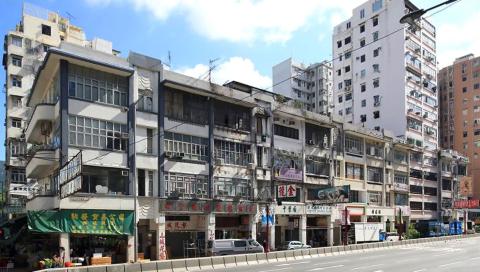

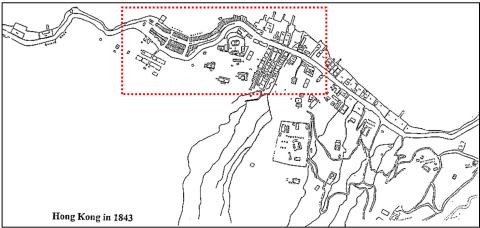

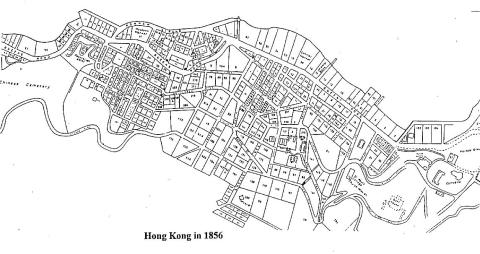
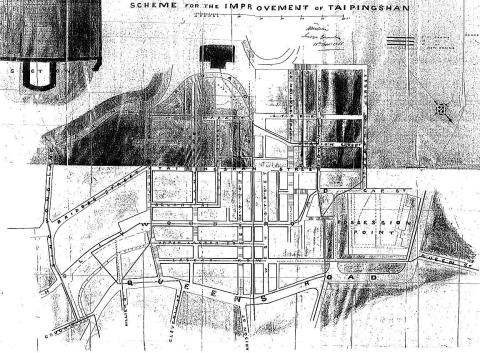
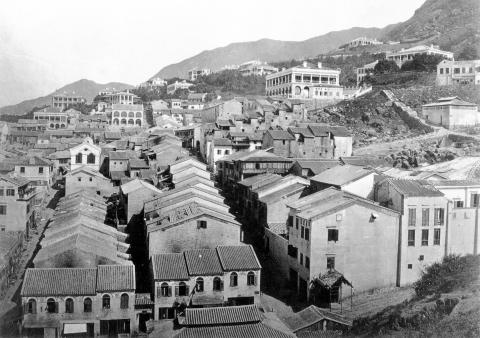
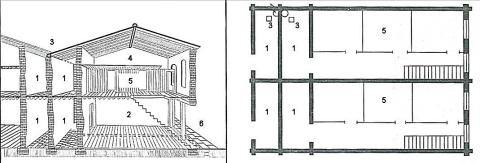
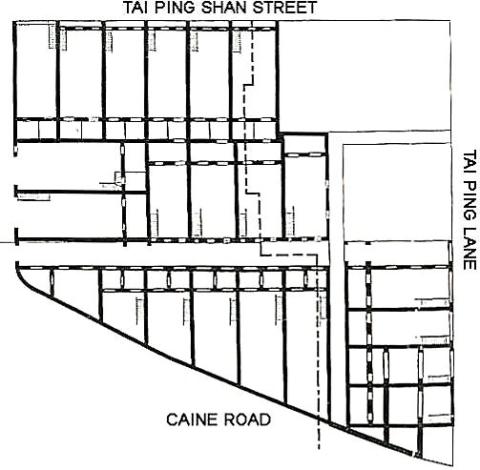
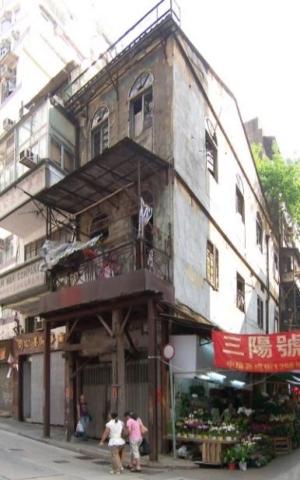
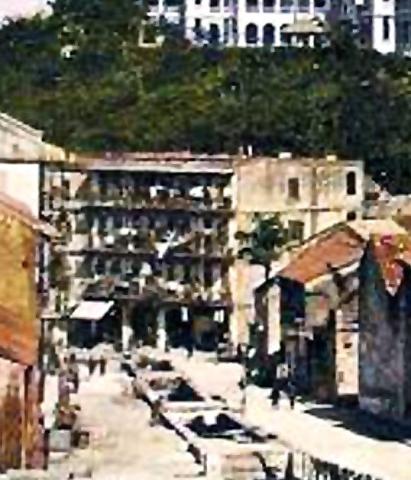
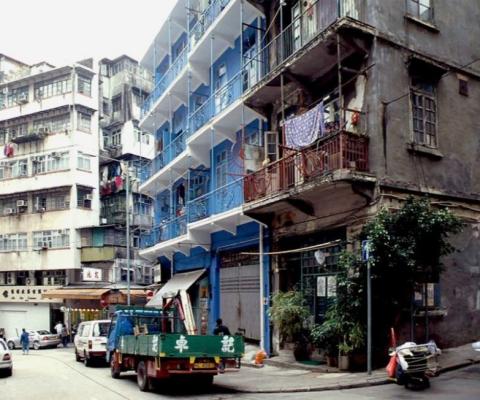

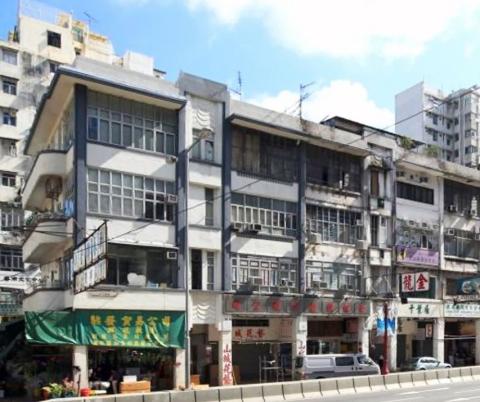

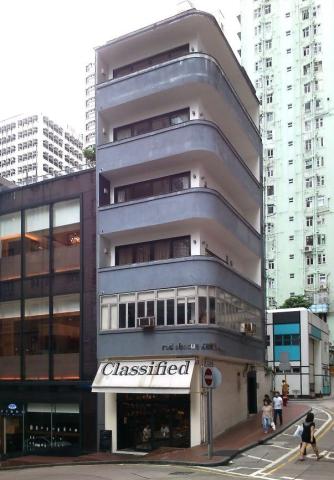
Comments
Shophouses
fascinating article. Many thanks to all for posting.
Hong Kong Shophouses
I grew up in the neighbourhood of second and third generation shophouses where each staircase started from the front street level and served only the units on either side. We did not have a second staircase or door so in case of fire and the escape route blocked, people would have to go to the rooftop (thankfully flat) to use another staircase. Tragic consequences somtimes happened and more fatal when fire happened at night and inflammable materials stored under the staircase, as was the incident in about 1961 on Lai Chi Kok Road just east of Yen Chow Street. My friend who lived across the street described the bright hot staircase that night, and his words stay with me.
What I found interesting is that in HK, an owner of a twin-column building can demolish it to build higher so some tall and skinny buildings look out of place. Regards, Peter
Good Read
Good reading. Thanks to all for posting
Shophouse - Uncovered Area
Greetings. The authors mentioned Guangzhou's 騎樓 which I am not familiar with. On our former level 3 home flat, this term refers only to the front and exposed/uncovered area about 13 feet wide and 8 feet deep; for such design, level 4's front wall/balcony was recessed. I guess the idea is that this area "rides" ontop of the building. Some surviving 4-stories shophouses have this design. Regards, Peter